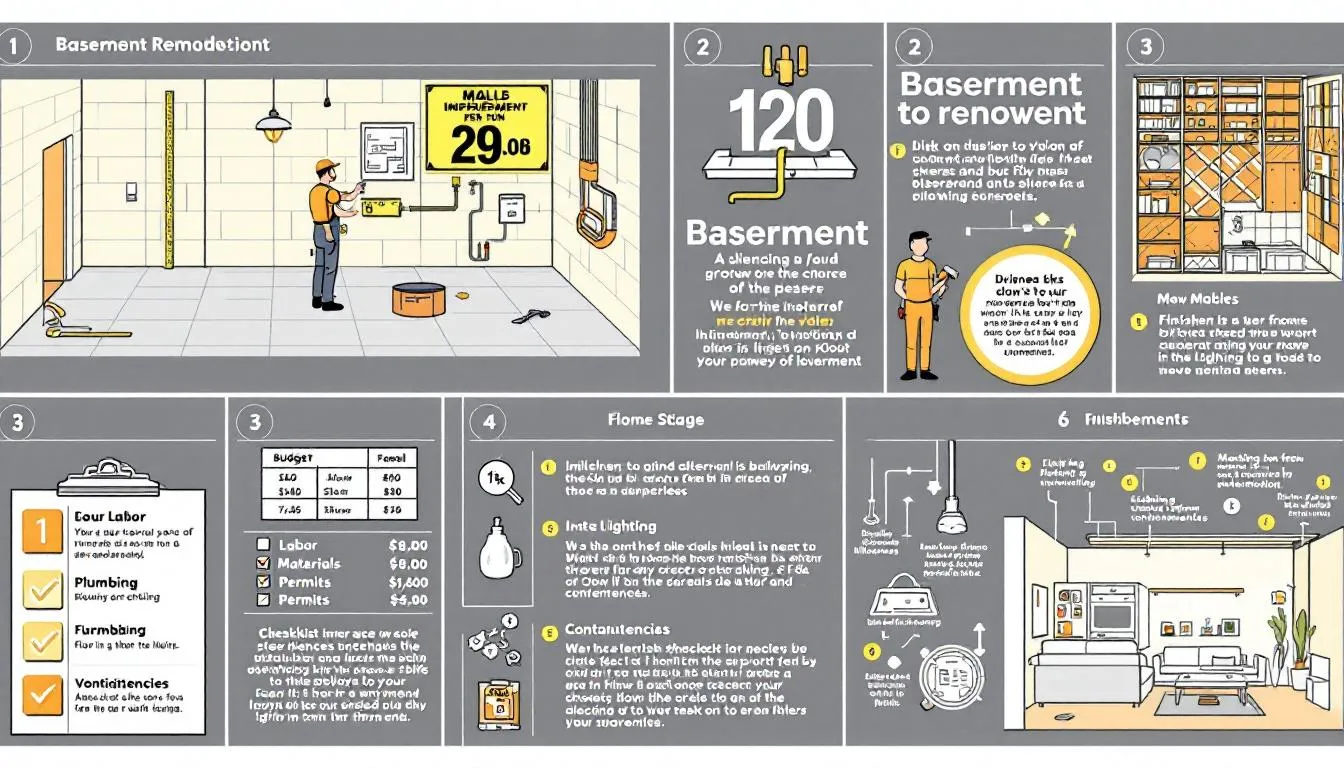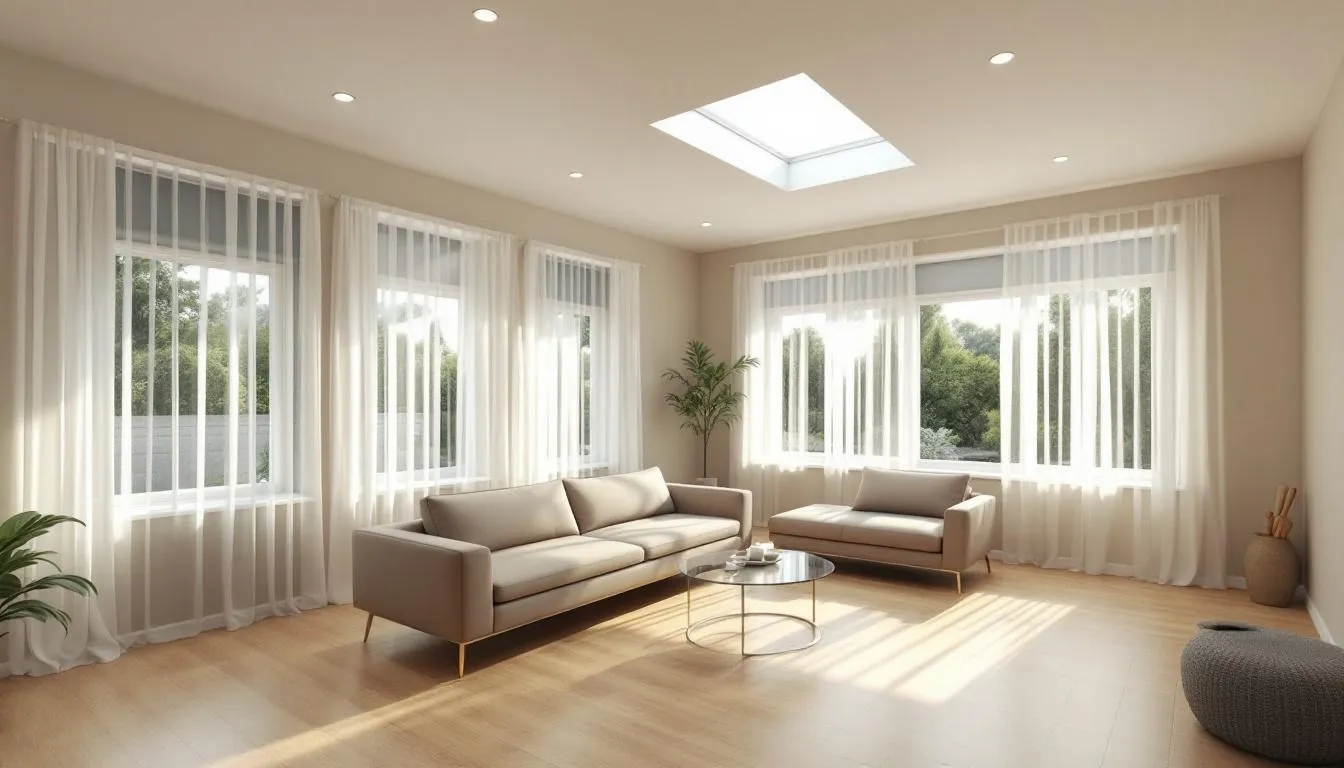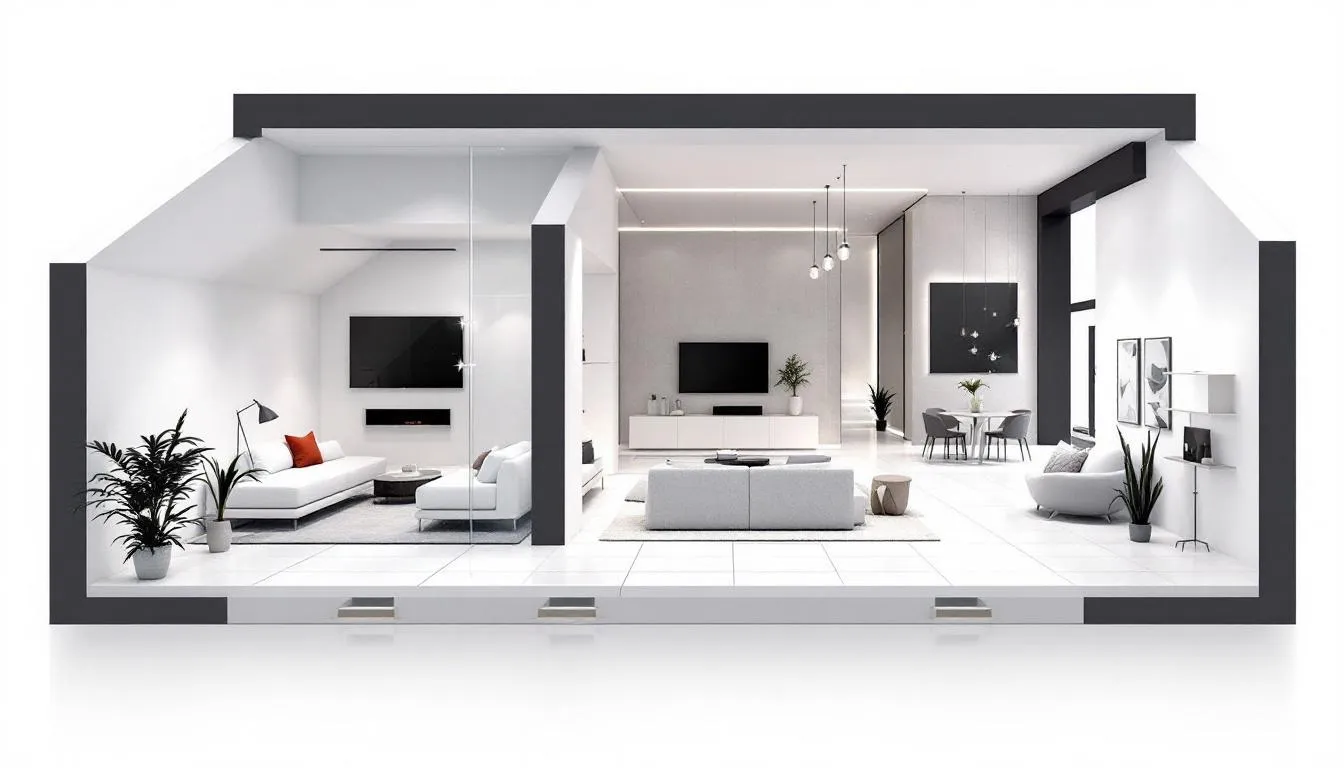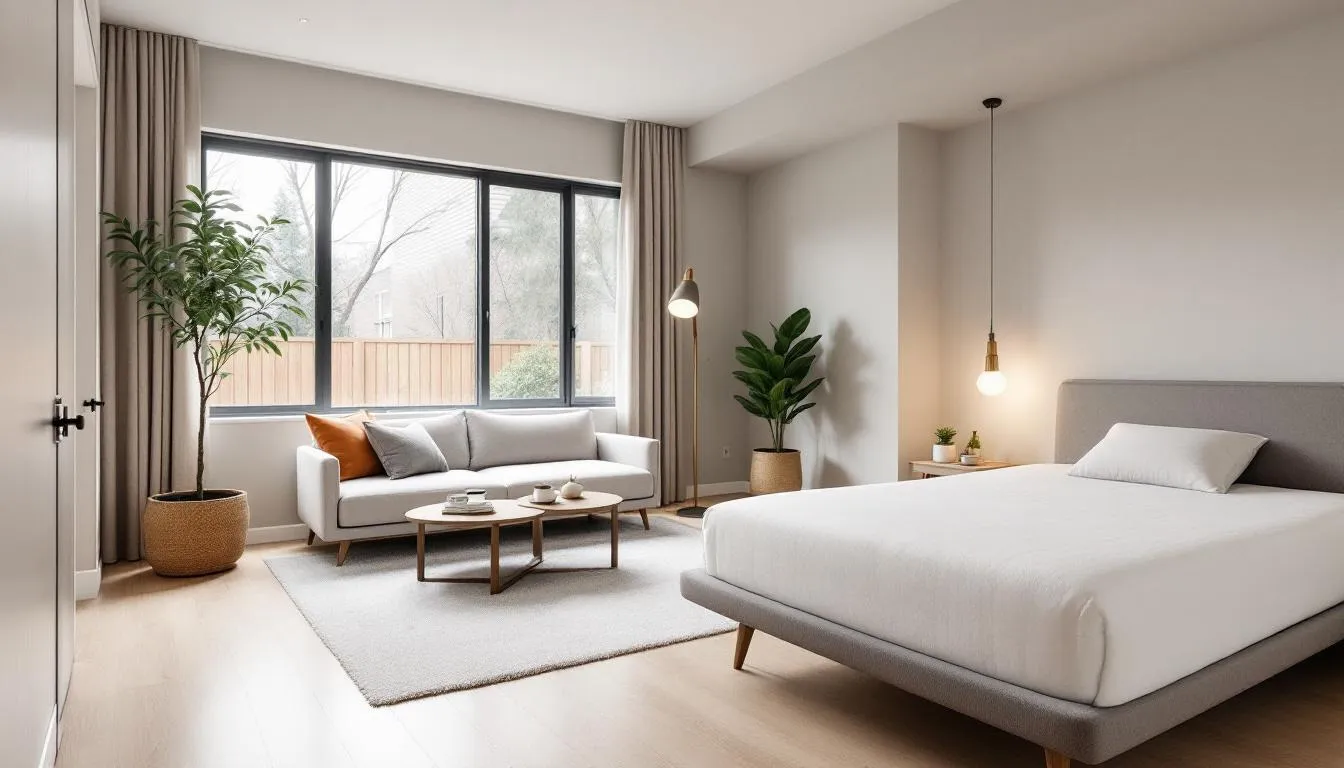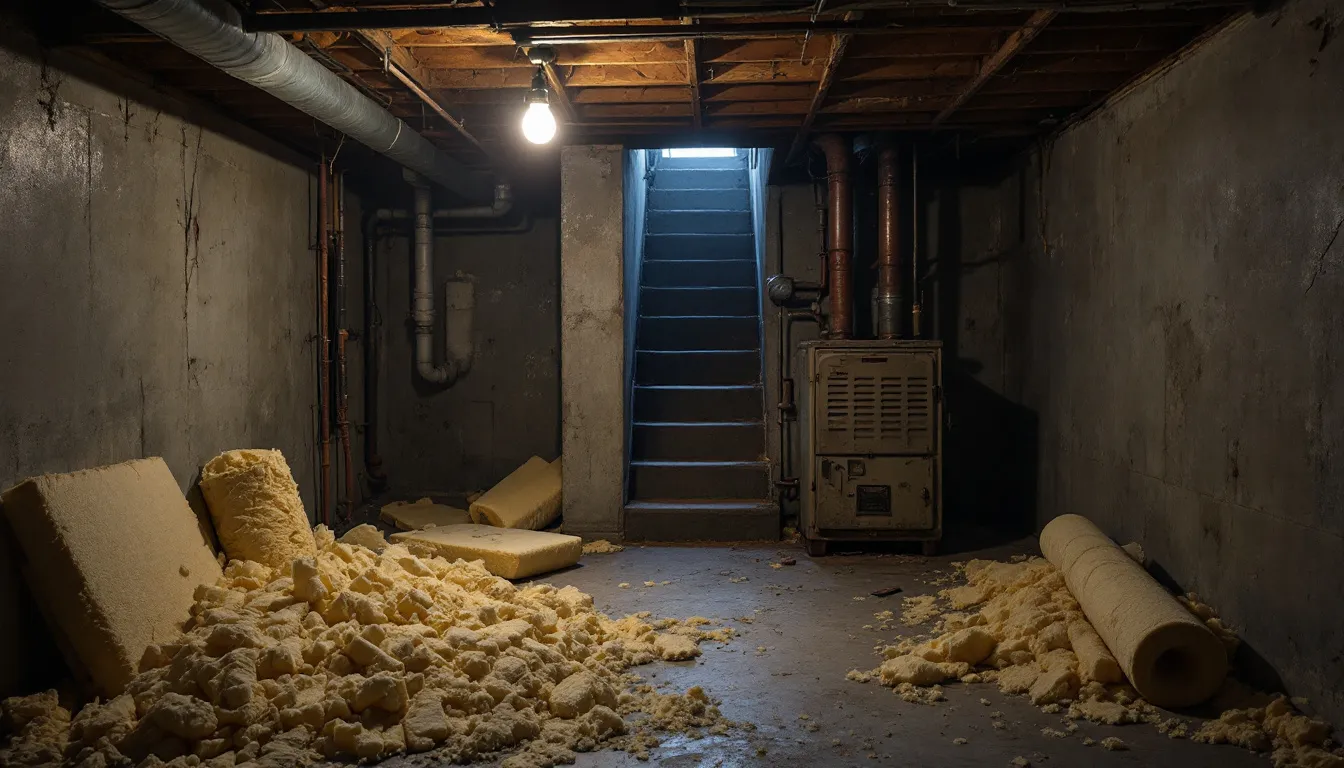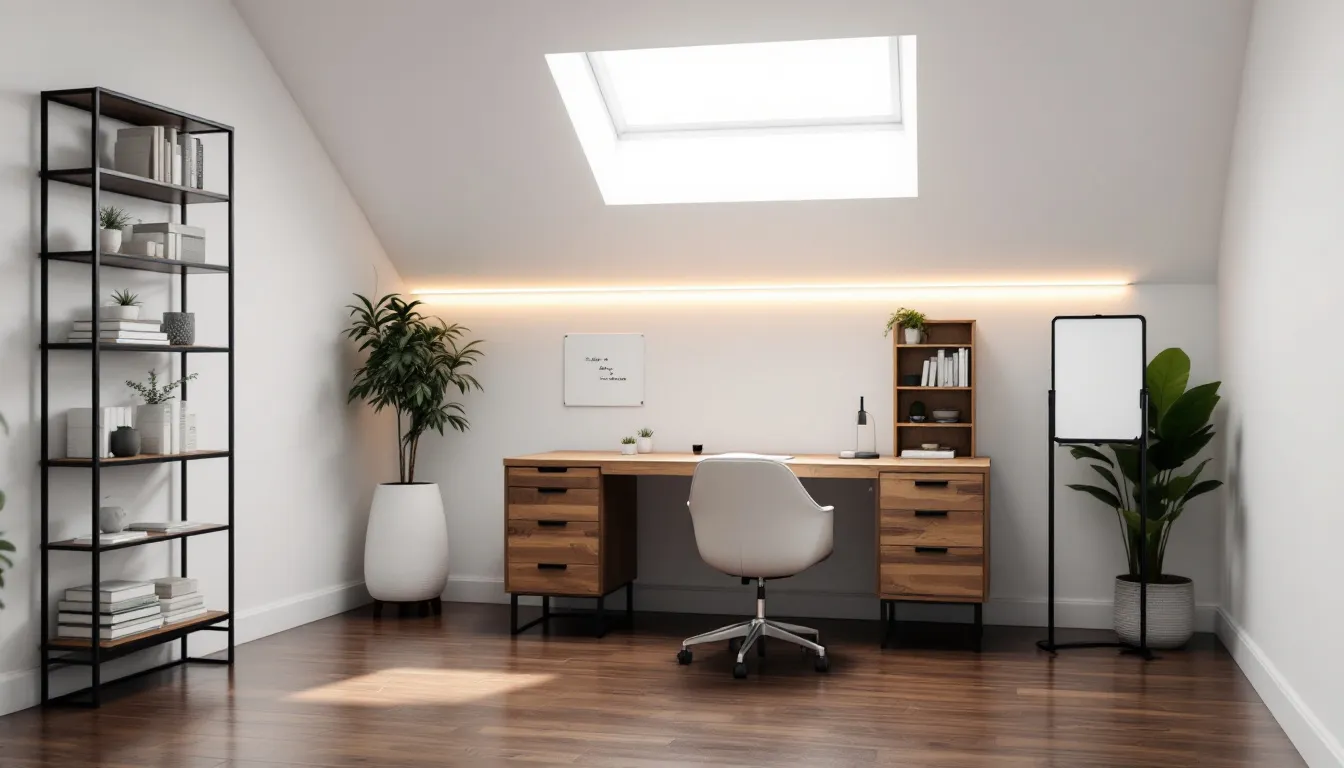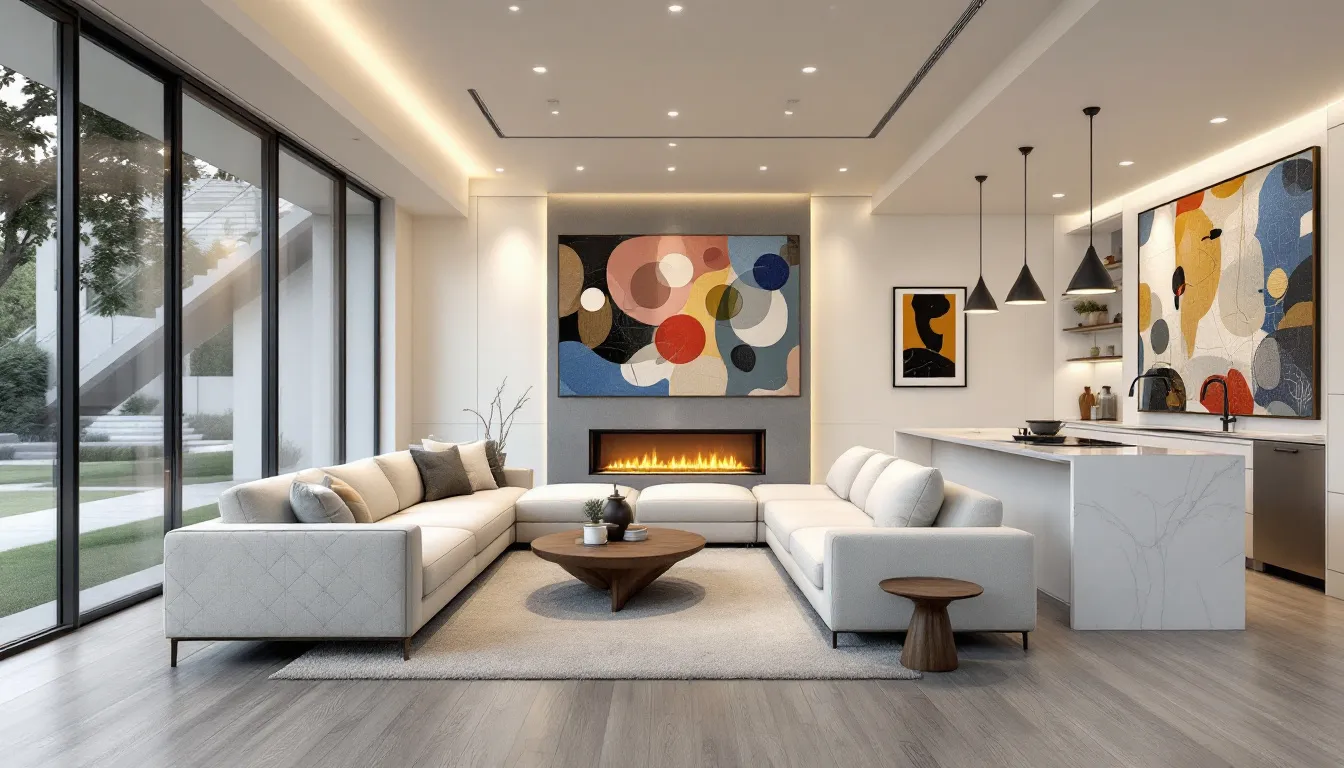Top 10 Basement Remodeling Ideas to Maximize Space and Style
Need to maximize space in your basement? This guide on the top 10 basement remodeling ideas to maximize space will help you unlock your basement’s full potential. From smart storage solutions to versatile layout plans, find practical tips to transform every inch of your basement.
Key Takeaways
Transform your basement into an open-concept layout to enhance space, flow, and natural light for a welcoming atmosphere.
Incorporate built-in storage solutions and multi-functional rooms to maximize usability and maintain an organized, clutter-free environment.
Create dedicated areas for entertainment, fitness, and creativity to ensure your basement serves as a valuable extension of your home.
Open Concept Layout
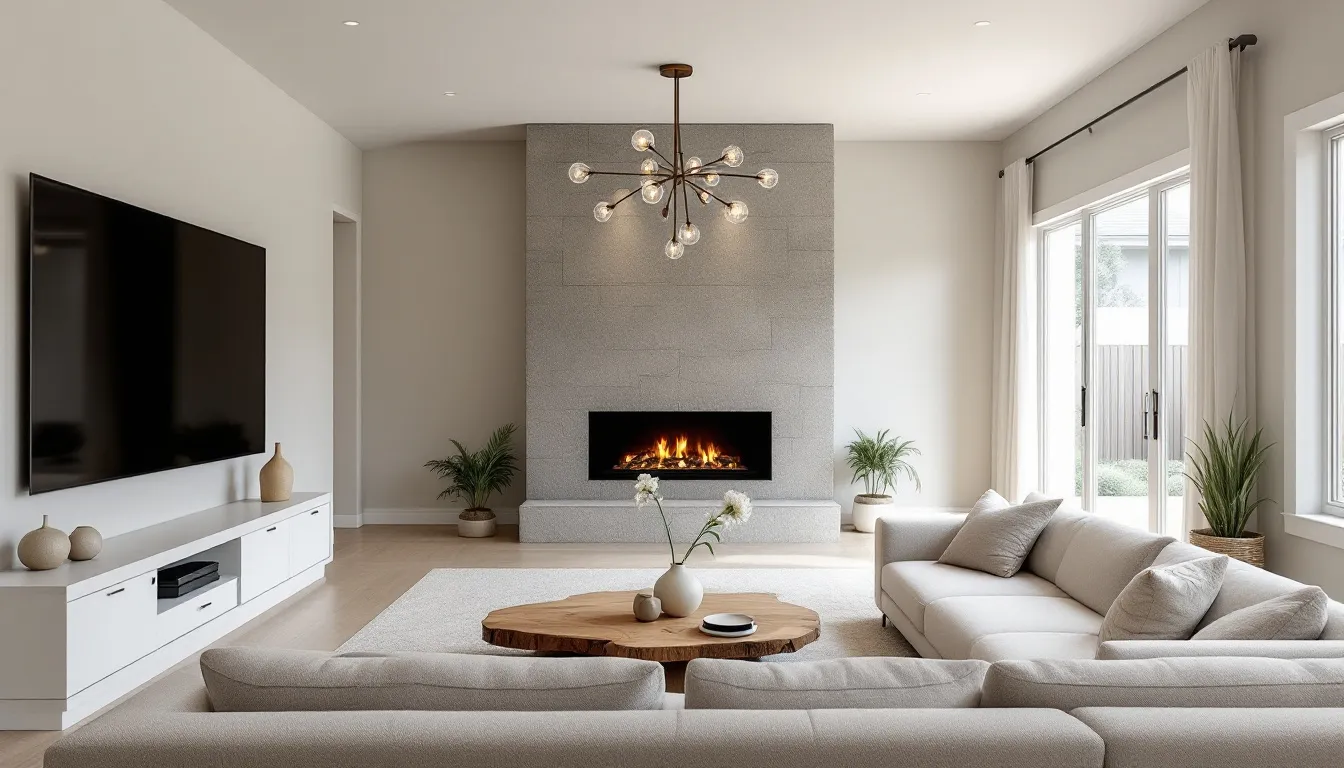
An open-concept basement design creates a more spacious and flexible living area, ideal for accommodating multiple activities. Removing walls enhances the flow between spaces, making socializing and entertaining easier. Imagine hosting a family gathering in a cozy family room that seamlessly transitions into a dining area or small kitchenette, creating an inviting space for everyone.
Utilizing natural light in your open-concept layout can transform a basement from dark and dreary to bright and welcoming. Install larger windows or use glass doors to let in as much light as possible. This not only makes the area feel larger but also creates a more pleasant atmosphere. And don’t forget about soundproofing materials to minimize noise levels across different areas, ensuring that your basement remains a peaceful retreat.
With an open layout, you have better opportunities for storage and decoration. Use the wall space effectively for built-in storage solutions or decorative shelving. This not only maximizes functionality but also keeps the space organized and visually appealing.
Built-In Storage Solutions
Storage is often a challenge in basements, but with clever built-in solutions, you can turn this challenge into an opportunity. Custom cabinetry tailored to fit your basement’s dimensions can provide ample storage while complementing your style preferences. Adjustable shelving units offer flexibility, allowing you to accommodate various items and adjust the space as needed.
One of the most ingenious basement ideas involves utilizing the space under the stairs. This often-overlooked area can be transformed into a functional and decorative mini-library or storage nook. Built-in benches with hidden storage can double as seating areas while providing a place to store blankets, games, or other items, keeping your basement clutter-free.
Organized storage solutions are essential for maintaining a tidy basement. Consider adding shelves to hide unsightly plumbing and equipment while maximizing storage capacity. Corner storage solutions can also help you make the most of every inch of space, ensuring that your basement remains both functional and inviting.
Multi-Functional Rooms

Transforming your basement into a multi-functional room can significantly increase its usability. Combining a guest suite with a home office is an excellent way to maximize functionality without sacrificing comfort. Flexible furniture, such as foldable tables and chairs, can enhance the versatility of your space, making it easy to switch between work and leisure activities.
Creating a playroom for kids in the basement provides a safe and enjoyable environment for them to play and learn. With ergonomic furniture and built-in desks, you can design a space that caters to their needs while keeping everything organized. Including a craft area with built-in counters and shelves can also maximize utility, offering a dedicated space for creative activities.
Designing your finished basement to accommodate both leisure and work activities ensures that every member of the family has a place to relax and be productive. Whether it’s a game room, home theater, or cozy family room, a well-planned basement remodel can provide beautiful spaces that cater to various needs.
Compact Kitchenette or Wet Bar
A compact kitchenette or wet bar can significantly increase the functionality of your basement, making it an ideal space for entertaining. Imagine having a small kitchenette with a mini fridge and open shelving, providing a practical area for simple meals and refreshments during family gatherings or game nights.
Energy-efficient appliances save space and reduce utility bills. Glass-front cabinetry and strategically placed recessed lighting can create the illusion of more light, enhancing the ambiance of your basement. Contrasting materials and open shelving add visual interest, making the space feel larger and more inviting.
A wet bar or snack area can elevate your movie-watching experience, offering easy access to refreshments without having to leave the comfort of your basement home theater. With these features, your basement becomes an extra living space that caters to both everyday needs and special occasions.
Home Theater Setup

Transforming your basement into a home theater creates a dedicated space for enjoying movies, making it perfect for family entertainment and hosting events. Imagine movie nights with theater seating, surround sound, and a large screen, all within the comfort of your home.
Key features of a home theater include soundproofing materials, dimmable lighting, and a built-in entertainment center to enhance organization and aesthetics. These elements work together to create an immersive cinematic experience, ensuring that every movie screening is engaging and enjoyable.
Whether it’s a cozy family room or a game room with a home theater setup, creating a space for entertainment can bring the family closer together and provide endless fun. Your home theater can become the heart of your basement, offering beautiful spaces for relaxation and enjoyment.
Fitness Area with Storage
Incorporating a fitness area in your basement can promote a healthy lifestyle while maximizing space. Wall-mounted storage solutions help keep gym equipment organized, ensuring that your workout space remains clutter-free. Add home gym essentials like dumbbells, a treadmill, and yoga mats for a comprehensive fitness studio.
Quality flooring is crucial for a basement fitness area. Rubber flooring or horse stall mats provide durability and comfort, making them ideal for workouts. Mirrors can enhance visibility and help monitor exercise form, creating an attractive and functional fitness studio.
A home gym saves time and money by offering the convenience of working out at home. With the right equipment and storage solutions, your basement can become a dedicated space for fitness, helping you achieve your health goals without leaving the house.
Cozy Reading Nook
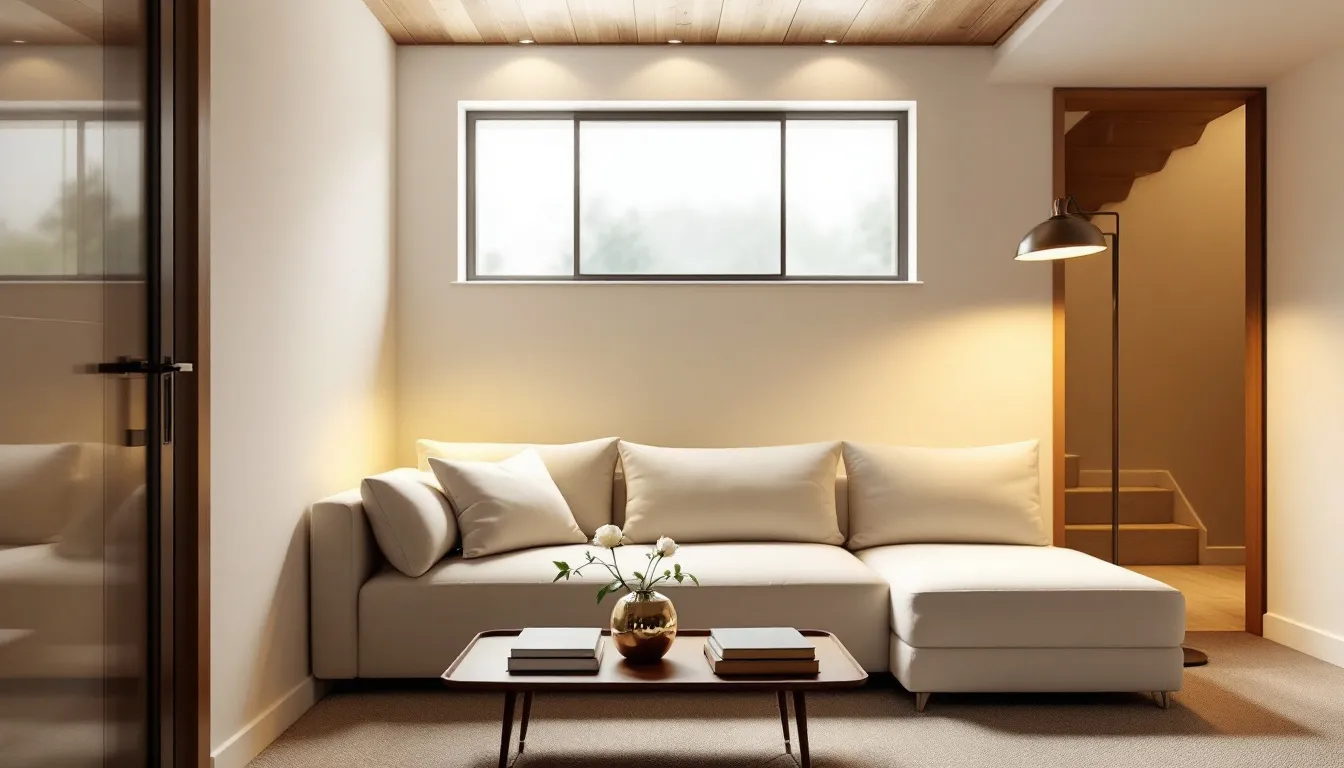
A cozy reading nook can become the ideal spot for relaxation and escape within your basement. Custom cushions tailored to fit specific dimensions and varied pillow sizes can enhance comfort and visual appeal. Book ledges provide practical vertical storage while adding a decorative touch to your reading area.
Natural light is essential for a reading nook, so consider adding windows or skylights to brighten the space. Adjustable lighting can also enhance the creative atmosphere, allowing you to read comfortably at any time of day. Decorative wallpaper and cozy blankets can personalize the nook, making it an inviting space for relaxation.
Creating a reading nook in your basement offers a functional and inviting space where you can unwind with a good book. With the right elements, this area can become a cherished retreat within your home.
Stylish Laundry Room
Upgrading your basement laundry room with stylish and functional elements can transform it from a mundane task area to a beautiful space you enjoy using. Space-saving appliances and custom cabinetry can maximize utility and efficiency, ensuring every inch of space is utilized effectively.
Adding decorative elements and a fresh coat of paint can enhance the overall appeal of your laundry room. This not only makes daily chores more enjoyable but also adds value to your home.
A well-planned basement remodel can turn your laundry room into a stylish area that complements the rest of your home. With thoughtful design and practical features, this often-overlooked space can become a highlight of your basement, showcasing some great basement remodeling ideas.
Creative Studio Space
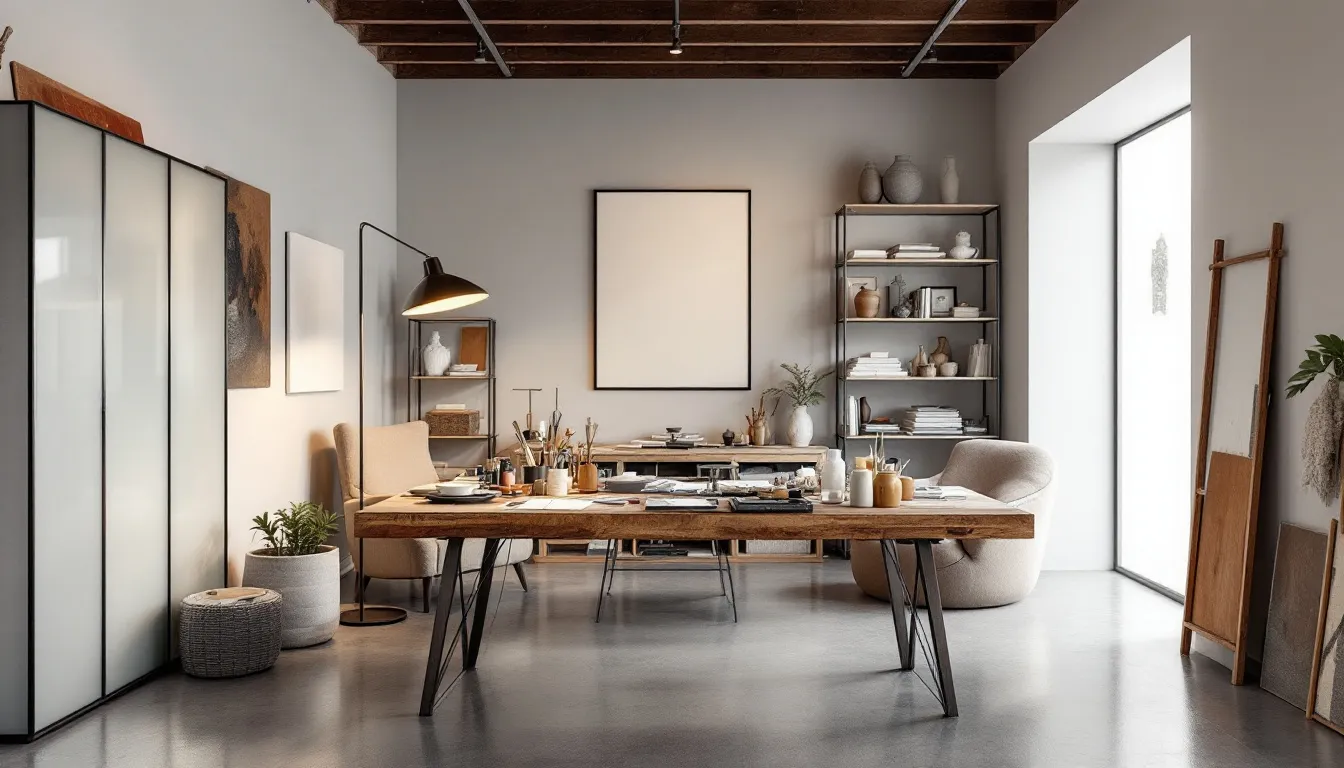
A creative studio space in your basement can serve as a dedicated area for pursuing your passions. Built-in counters and shelves enhance functionality, providing ample space for art supplies and other creative tools. Inspiring colors and decor can significantly boost creativity, making the studio an inviting space for artistic endeavors.
Ergonomic furniture and built-in desks are essential for comfort and productivity, ensuring that you can work on your projects for extended periods without discomfort. The creative studio space can be tailored to meet your specific needs, transforming your basement into a dream basement where you can create and inspire.
With a dedicated space for creativity, your basement can become a haven for artistic expression and innovation. This transformation allows you to fully utilize your basement’s potential, creating a space that reflects your passions and talents.
Game Room with Storage
A game room in your basement can provide endless entertainment for family and friends. Designed to accommodate various activities, such as board games, video games, and pool, a game room can become a vibrant hub of activity. Incorporating built-in storage for games and a pool table ensures that the space remains organized and clutter-free.
Stylish storage solutions, such as baskets, boxes, and trays, can help contain clutter while adding to the room’s decor. To create an immersive and exciting atmosphere in the game room, vibrant LED lighting and themed decor can be added. Incorporating sound effects will further enhance the overall experience for everyone.
With a well-planned game room, your basement can become a dream basement filled with fun and laughter. This space not only provides entertainment but also adds value to your home, making it a beloved part of your living area.
Summary
In summary, transforming your basement into a functional and inviting space is not only possible but also highly rewarding. From open-concept layouts to stylish laundry rooms, the possibilities are endless. Each idea discussed offers practical solutions to maximize space and enhance the overall appeal of your basement.
By implementing these basement remodeling ideas, you can create beautiful spaces that cater to your family’s needs and reflect your style. Embrace the potential of your basement and turn it into an extra living space that brings joy and functionality to your home.
Ready to work with Basement Remodeling Long Island?
Let's connect! We’re here to help.
Send us a message and we’ll be in touch.
Or give us a call today at 646-801-1701
Agency Contact Form
More Marketing Tips, Tricks & Tools
